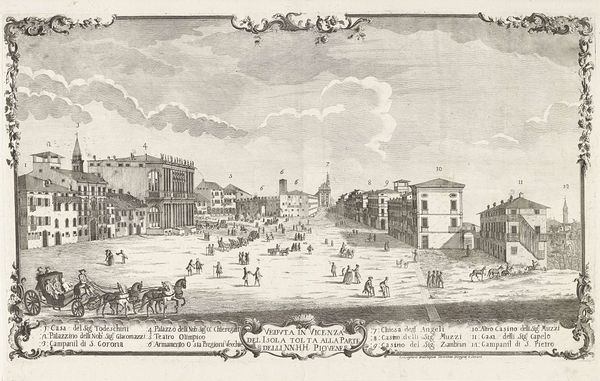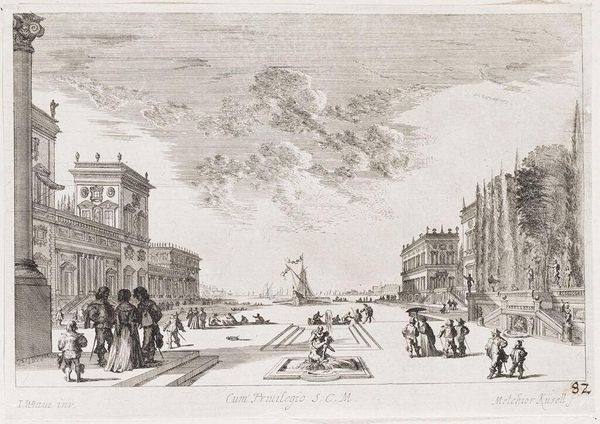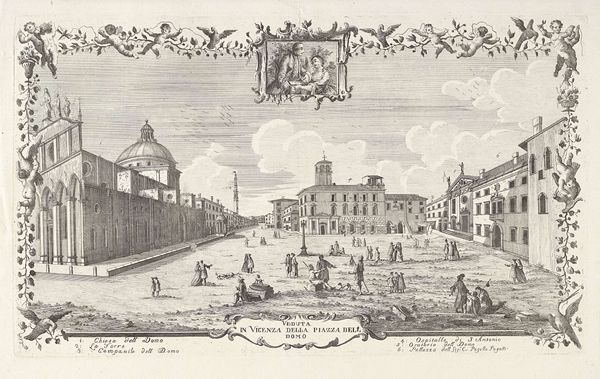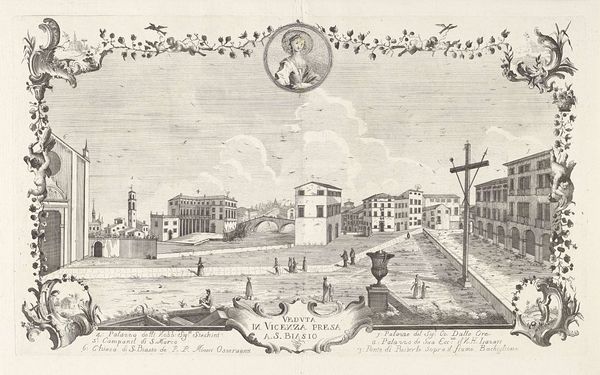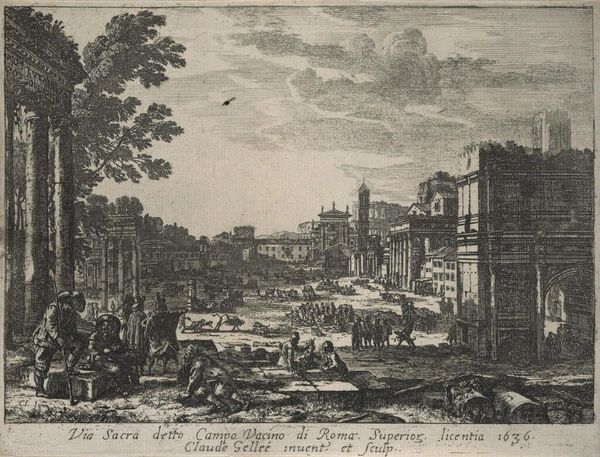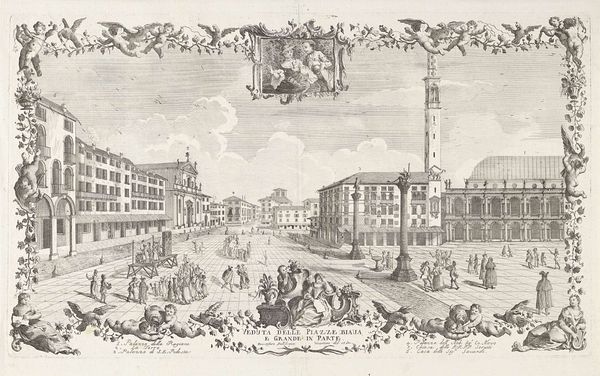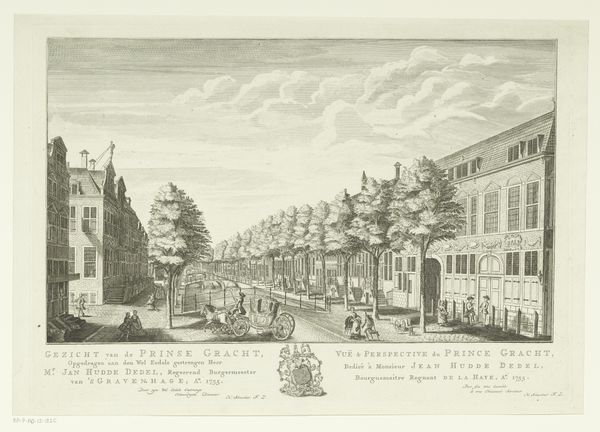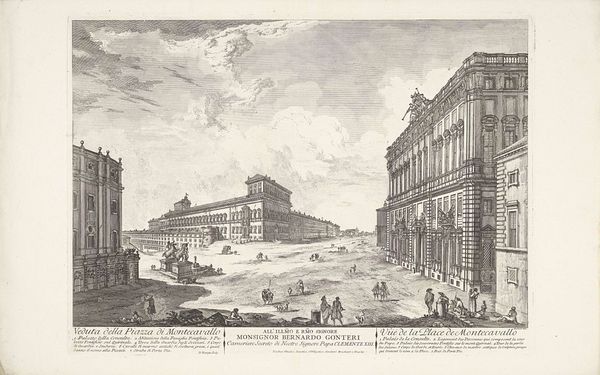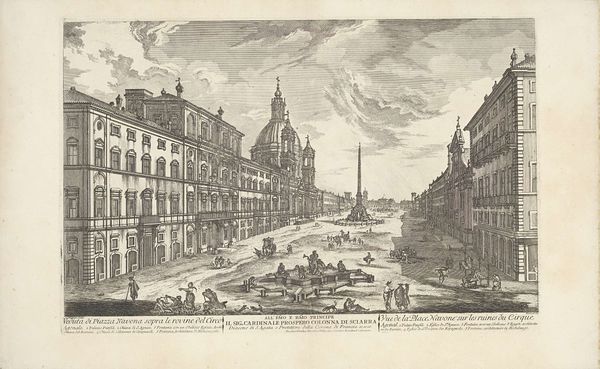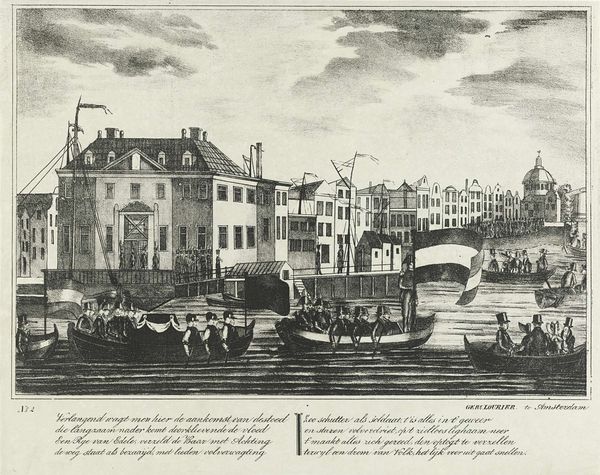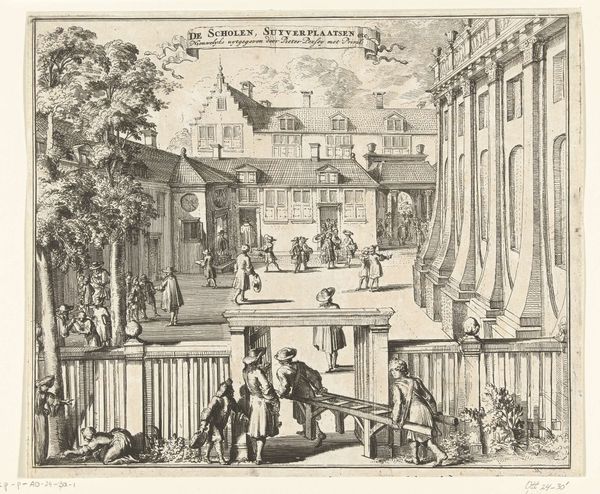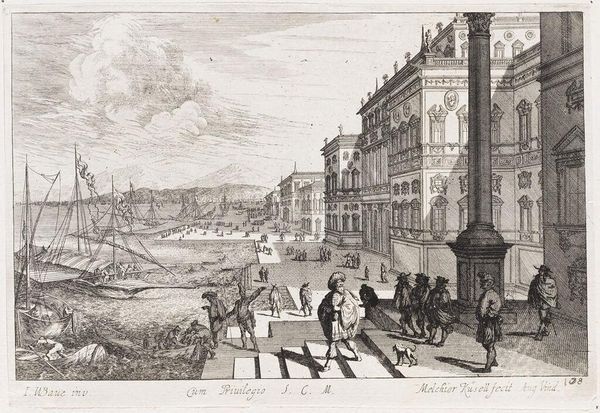
Dimensions: height 370 mm, width 621 mm
Copyright: Rijks Museum: Open Domain
Curator: Let’s take a look at this detailed engraving, "De Quartiero wijk in Vicenza," created by Cristoforo dall'Acqua sometime between 1744 and 1787. It offers us a glimpse into the urban landscape of 18th-century Vicenza. What strikes you initially? Editor: There's a wistful melancholy to it. It’s like stepping into a half-remembered dream, where grand buildings loom but the people are like faint sketches, barely there. It's beautifully bleak, in a way. Curator: Precisely. Notice the artist's handling of perspective and how it draws your eye deep into the composition. Also the attention to detail – from the textures of the buildings to the attire of the figures. This level of craftsmanship speaks volumes about the engraving practices and artistic sensibilities of the Venetian school during this period. It was painstaking labor. Editor: You’re right. You can almost feel the burin scratching the copper plate. All those tiny lines! Makes you think about the artisan and their relationship to their craft. Each person captured in the print probably wasn't aware that someday they will exist on this meticulously worked object to be remembered, analyzed, adored and maybe forgotten. Is there a statement there about mortality or a fleeting moment in time? Curator: It's a compelling point. The engraving was created and reproduced on an industrial level, which allowed for widespread consumption of imagery depicting urban development and ideals of social status. It's worth remembering the impact such depictions had on shaping perceptions and aspirations beyond the elite. How are landscapes made and viewed in that time of nascent Capitalism. Editor: Exactly, that almost journalistic eye Cristoforo employs is so matter of fact. We are invited to see reality as it presents itself in Vicenza! And perhaps with an underlying motive! Perhaps it's trying to say “Life is good here”. Almost like a promotion for the lifestyle the elite enjoyed. Curator: I appreciate you pointing that out. It underscores the role of art as a tool within specific material circumstances. Editor: I concur. It enriches our perception, doesn’t it? It transcends just the technical to say something very human about this little scene and maybe all scenes, even now. Curator: Absolutely. Analyzing the social dimensions interwoven into the craft reminds us to reconsider what truly remains when materials fade with the passage of time.
Comments
No comments
Be the first to comment and join the conversation on the ultimate creative platform.
